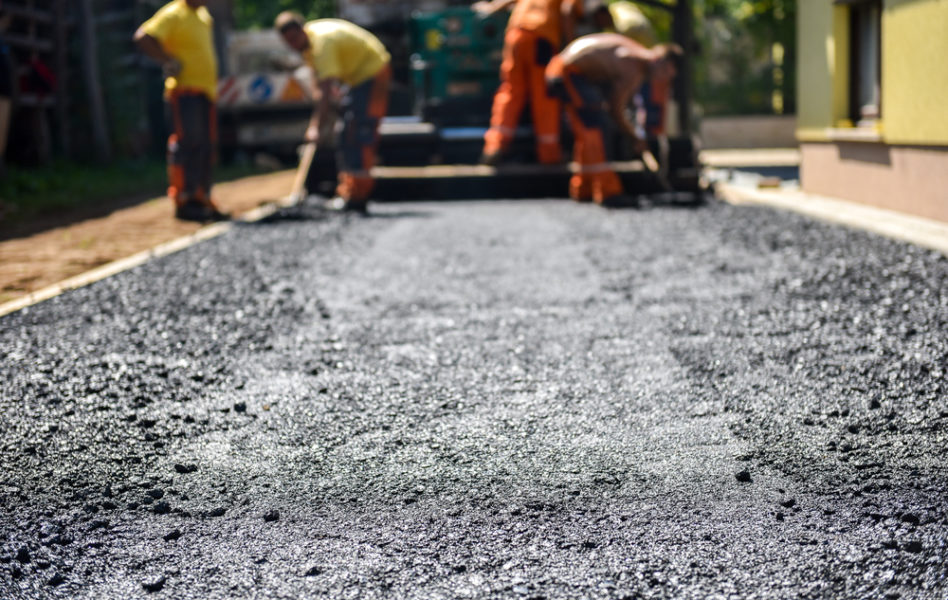Unlocking the Secrets of Hot Mix Asphalt Innovation
Exploring the midsts of hot mix asphalt technology uncovers a world where careful procedures and accurate formulas merge to form our roadways and infrastructure. The fusion of aggregates, fillers, and binders isn't simply a building and construction job but a calculated orchestration of resilience and effectiveness.
Significance of Warm Mix Asphalt
Warm Mix Asphalt plays a vital function in modern framework growth as a result of its sturdiness and cost-effectiveness. As the most commonly utilized paving material for roads, highways, and parking area, Warm Mix Asphalt provides a series of advantages that add to its value in building jobs. One crucial advantage is its capability to hold up against hefty traffic tons and extreme climate conditions, supplying a reliable and durable surface area for transportation networks. Furthermore, Warm Mix Asphalt is economical in both initial construction and lasting maintenance, making it a preferred selection for several framework tasks.
The resilience of Warm Mix Asphalt originates from its structure, which consists of aggregates, binder, and filler products that are very carefully chosen and mixed to meet specific efficiency demands. This accurate combination results in a solid and adaptable pavement that can sustain regular use without significant damage. In Addition, Hot Mix Asphalt is 100% recyclable, further improving its sustainability and environmental advantages. On the whole, the importance of Hot Mix Asphalt in infrastructure growth can not be downplayed, as it remains to be a foundation of modern-day building techniques.
Parts of Asphalt Mixes
The make-up of asphalt mixes is composed of meticulously chosen aggregates, binder, and filler materials that are important for attaining certain performance needs. Accumulations are the main element of asphalt blends, providing stamina and stability. These aggregates can be natural, such as gravel or crushed stone, or synthetic, like recycled materials from old sidewalks. The binder, normally bitumen or asphalt cement, holds the accumulations with each other and provides flexibility and resilience to the mix. The option of the binder is essential as it directly affects the mix's efficiency in different climate condition. Fillers, such as moisturized lime or Portland concrete, are made use of to improve the mix's workability and aging resistance. Angled Parking.
The combination and proportion of these parts play a significant function in figuring out the high quality and efficiency of the asphalt mix. Engineers thoroughly design the mix to satisfy particular needs, considering factors like traffic quantity, environment problems, and sidewalk lifespan. Correct option and harmonizing of accumulations, binder, and fillers are crucial for developing durable, long-lasting asphalt pavements.
Combining and Manufacturing Techniques

As soon as the aggregates are picked, the binder, often asphalt concrete, is included in bind the products with each other. The binder's quality and amount significantly impact the mix's resistance, stamina, and versatility to ecological elements. Furthermore, fillers like moisturized lime or Rose city concrete might be incorporated to improve certain features pop over here of the asphalt mix, such as its workability or dampness resistance.
Throughout production, the accumulations and binder are heated, generally in between 250-325 ° F(121-163 ° C ), to help with mixing and make certain proper finishing of the accumulations. The blending procedure has to be complete to accomplish a homogeneous mixture that promotes the desired performance features of the asphalt. Different strategies, such as set blending or drum mixing, are utilized to accomplish consistent and top notch asphalt blends for building and construction jobs.
Elements Impacting Asphalt Performance
Aspects influencing asphalt efficiency include a range of variables that influence the durability, longevity, and overall quality of asphalt pavements. One crucial variable is the quality of materials made use of in the asphalt mix.

Ecological conditions likewise influence asphalt efficiency. Temperature level variants, moisture seepage, and website traffic loads can all influence the architectural integrity of the pavement. Style considerations, such as pavement thickness and drainage, are essential in making sure the long-term efficiency of the asphalt sidewalk. go to these guys By carefully thinking about these professionals, designers and elements can optimize asphalt efficiency and improve the solution life of sidewalks.
Sustainable Practices in Asphalt Technology

WMA permits for the production and placement of asphalt blends at reduced temperatures contrasted to traditional hot-mix asphalt, resulting in decreased energy usage and greenhouse gas emissions. The use of porous asphalt mixes can assist minimize stormwater drainage issues by permitting water to penetrate via the sidewalk and right into the ground, advertising all-natural water filtration and charge processes.
Verdict
Finally, warm mix asphalt modern technology plays a vital function in modern framework growth due to its longevity and cost-effectiveness. By carefully balancing parts, employing correct mixing strategies, and considering numerous aspects, engineers can develop top notch asphalt blends that stand up to rush hour lots and harsh weather problems. Accepting sustainable methods, such Full Article as utilizing warm-mix innovations and recycled products, further improves the environmental kindness of asphalt innovation.
Blending and manufacturing techniques in warm mix asphalt innovation involve the accurate combination and handling of aggregates, binder, and fillers to produce a high-performance and sturdy asphalt mix.Aspects influencing asphalt efficiency incorporate a variety of variables that influence the resilience, longevity, and total high quality of asphalt pavements. Sustainable practices in asphalt modern technology encompass various initiatives intended at decreasing the environmental impact of asphalt manufacturing and paving processes. By including redeemed asphalt sidewalk (RAP) and recycled asphalt tiles (RAS) into brand-new asphalt blends, the market can dramatically decrease the consumption of raw materials and energy, while also reducing land fill waste.
WMA allows for the production and positioning of asphalt blends at lower temperatures contrasted to traditional hot-mix asphalt, resulting in reduced energy intake and greenhouse gas exhausts.